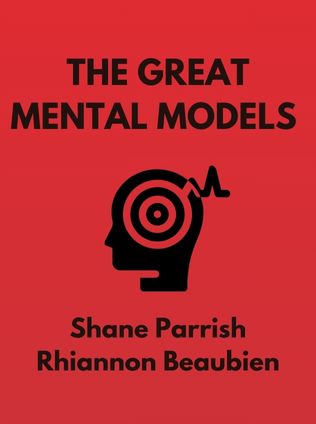
The Great Mental Models Volume 1
By Shane Parrish and Rhiannon Beaubien
Published 03/2022
About the Author
Shane Parrish, the founder of Farnam Street, is a former Canadian intelligence agent who has dedicated his career to exploring the intricacies of mental models, decision-making, and the pursuit of wisdom. Alongside Rhiannon Beaubien, a content strategist at Farnam Street, Parrish co-authored The Great Mental Models Volume 1 as a way to distill and share the most effective thinking tools across various disciplines. The Farnam Street blog, which has become a trusted resource for readers interested in intellectual growth, decision-making, and mental models, reflects Parrish's commitment to helping people live more thoughtful and informed lives.
Parrish’s journey from intelligence to intellectual leadership highlights his unique approach to understanding the world. His experiences in intelligence taught him the importance of critical thinking, problem-solving, and strategic decision-making—all skills that are reflected in his work on mental models. Beaubien complements Parrish’s insights with her expertise in writing and content strategy, making complex ideas accessible to a broader audience. Together, they aim to provide readers with the tools to see the world more clearly and make better decisions in both personal and professional contexts.
Main Idea
The Great Mental Models Volume 1 serves as an introduction to a series designed to equip readers with a foundational set of mental models—frameworks for thinking that simplify complexity and improve decision-making. The book emphasizes that the world is governed by certain rules and patterns, and by understanding these, one can better navigate life’s challenges. The nine mental models presented in this volume are drawn from various fields, such as physics, biology, and psychology, and are intended to be universally applicable.
The core premise of the book is that by internalizing these mental models, readers can develop a kind of "x-ray vision" for understanding the world. This enhanced perception allows for clearer thinking, better problem-solving, and more effective decision-making. The authors argue that wisdom—defined as the ability to see clearly and solve problems creatively—can be cultivated through the use of these models.
Table of Contents
- Introduction: The Importance of Mental Models
- Group #1: Elemental Models
- Model #1: The Map Is Not the Territory
- Model #2: Circle of Competence
- Model #3: First Principles Thinking
- Group #2: Systems Models
- Model #4: Second-Order Thinking
- Model #5: Probabilistic Thinking
- Model #6: Inversion
- Group #3: Rules of Thumb
- Model #7: Occam’s Razor
- Model #8: Hanlon’s Razor
- Model #9: The Margin of Safety
- Conclusion: The Power of Mental Models
Introduction: The Importance of Mental Models
The introduction sets the stage by explaining what mental models are and why they are crucial for navigating the complexities of life. Mental models are simplified representations of how the world works, allowing us to cut through complexity and focus on what really matters. The authors emphasize that while no model is perfect, some are incredibly useful for making better decisions and avoiding mistakes.
As the book points out, "All models are wrong, but some are useful." This famous quote by the statistician George Box encapsulates the essence of the book's approach: models are tools that help us make sense of the world, even if they are not entirely accurate. By understanding the limitations and strengths of different models, we can apply them more effectively to our lives.
Sign up for FREE and get access to 1,400+ books summaries.
You May Also Like
The Subtle Art of Not Giving a F*ck
A Counterintuitive Approach to Living a Good Life
By Mark MansonRich Dad Poor Dad
What the Rich Teach Their Kids About Money - That the Poor and Middle Class Do Not!
By Robert T. KiyosakiHow To Win Friends and Influence People
The All-Time Classic Manual Of People Skills
By Dale CarnegieFreakonomics
A Rogue Economist Explores the Hidden Side of Everything
By Steven D. Levitt and Stephen J. Dubner



















